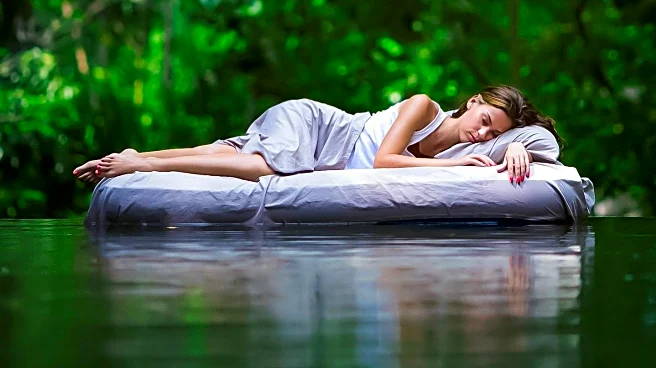What's Happening?
Research indicates that sleeping outdoors can significantly reset the body's circadian rhythm, aligning it closer to a natural sleep-wake cycle. A study published in Current Biology found that even a weekend
of alfresco sleeping without artificial light can adjust the internal clock by approximately 2.5 hours. This concept is gaining traction within the sleep tourism industry, which is expanding as more people seek solutions to improve sleep quality. The absence of artificial light during outdoor sleep enhances melatonin production, crucial for regulating sleep patterns.
Why It's Important?
The growing interest in sleep tourism and outdoor sleeping reflects a broader societal concern about sleep quality and its impact on health. With nearly 40% of U.S. adults reporting insufficient sleep, according to the CDC, the potential health benefits of natural sleep environments are significant. Improved sleep can reduce risks of heart disease, obesity, and cognitive issues, highlighting the importance of addressing sleep hygiene. The trend towards outdoor sleeping could influence travel and wellness industries, encouraging the development of accommodations that facilitate natural sleep experiences.
What's Next?
As the sleep tourism industry continues to grow, more hotels and resorts may offer outdoor sleeping experiences to attract health-conscious travelers. This could lead to innovations in accommodation design, focusing on natural environments that promote better sleep. Additionally, public health initiatives might incorporate outdoor sleeping as a strategy to combat sleep-related health issues, potentially influencing urban planning and recreational space design.
Beyond the Headlines
The emphasis on natural sleep environments underscores a cultural shift towards holistic health practices. This trend may inspire further research into the benefits of nature exposure on mental and physical health, potentially influencing wellness programs and lifestyle choices. The integration of natural elements into daily life could become a key component of future health and wellness strategies.











